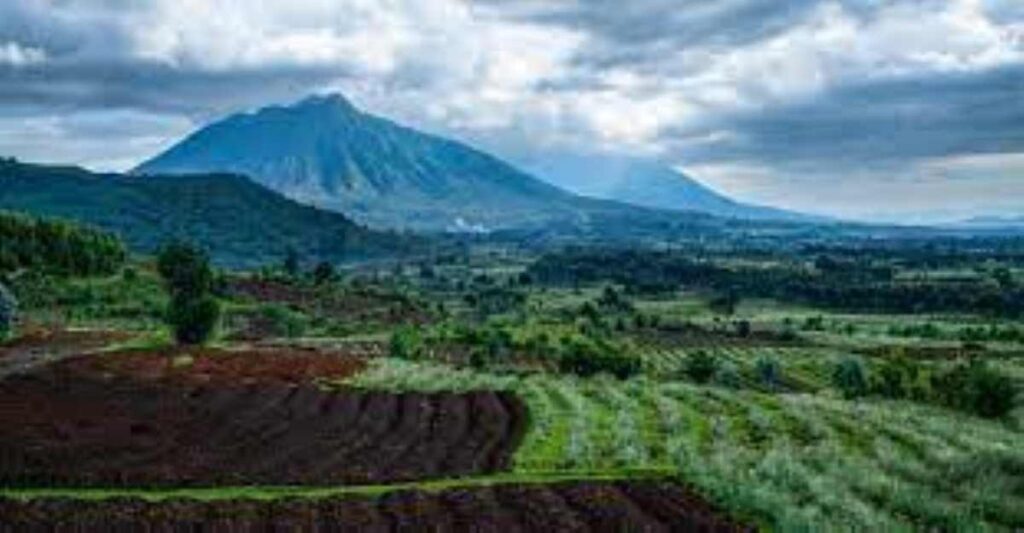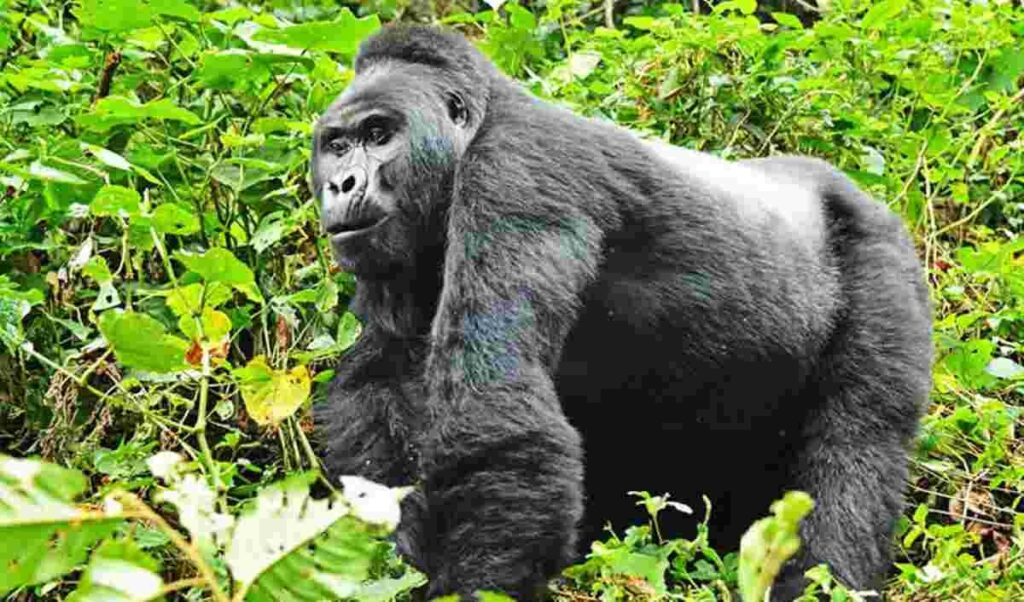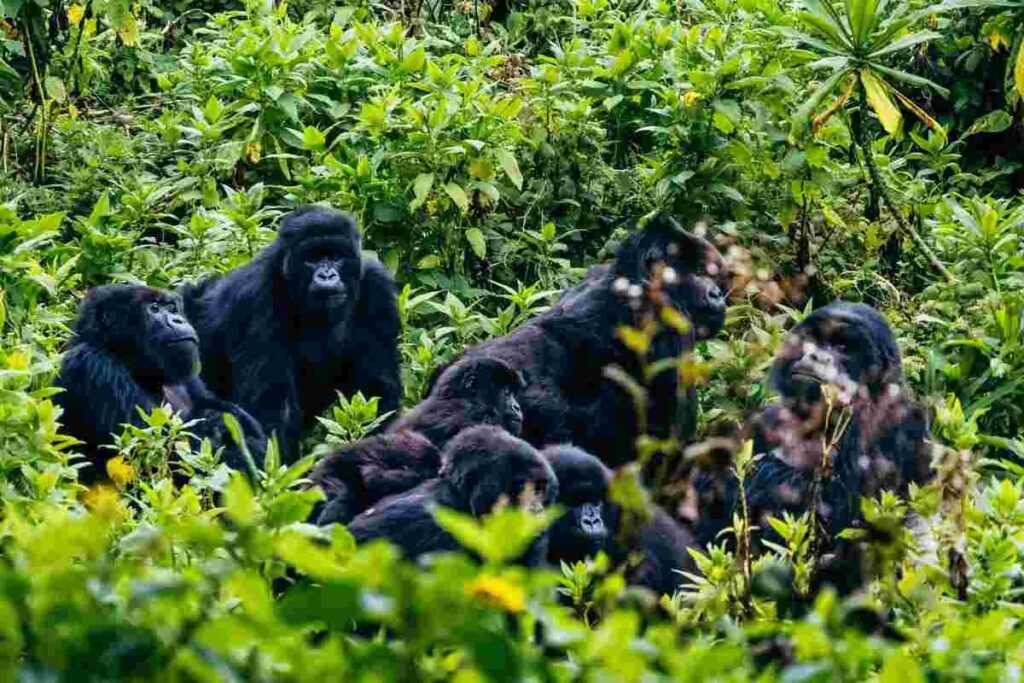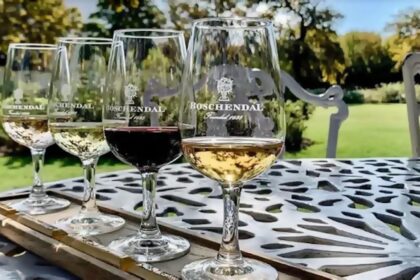At a Glance
- Gorilla tourism has turned Musanze into Rwanda’s eco-tourism capital, creating jobs and funding infrastructure from roads to hospitals.
- Rwanda reinvests 10% of park revenue into nearby communities, improving education, healthcare, and livelihoods.
- The Volcanoes Community Resilience Project aims to expand protected areas by 23%, increase the gorilla population, and create 17,000 new jobs by 2028.
At the base of the mist-shrouded Virunga Mountains, Rwanda’s Musanze District tells one of Africa’s most compelling development stories.
Once a quiet farming region known for its volcanic soils and terraced hillsides, Musanze has transformed into a thriving hub for eco-tourism and conservation-led growth.
At the heart of this transformation is gorilla tourism — a model that has turned wildlife protection into an engine of social and economic progress.
Over the past two decades, gorilla trekking has become the cornerstone of Rwanda’s tourism industry, drawing visitors from around the world eager to see the endangered mountain gorillas in their natural habitat.
What began as a conservation effort to protect the last remaining gorillas has evolved into a broader national movement that fuels infrastructure development, supports local communities, and strengthens the country’s global image.
Each year, the Kwita Izina gorilla-naming ceremony — inspired by a centuries-old Rwandan tradition of naming newborns — celebrates this achievement.
It is both a symbol of national pride and a reminder of how far Rwanda has come since the dark days of its past.
Since the inaugural event in 2005, nearly 400 baby gorillas have been named, a testament to successful conservation programs and to the communities that help make them possible.
According to the Rwanda Development Board, the mountain gorilla population has risen from 880 in 2012 to more than 1,063 today.
The increase reflects a simple truth: when communities benefit directly from conservation, both people and nature thrive.

Tourism that builds communities
Musanze’s transformation is visible across its landscape — from newly paved roads and renovated schools to bustling markets and modern hotels.
The district’s main hospital recently underwent a €91 million upgrade, part of a broader infrastructure drive supported by tourism revenue.
With gorilla trekking permits costing up to $1,500 per person, tourism has become a major source of national income and local opportunity.
A cornerstone of Rwanda’s success is its revenue-sharing model, which allocates 10% of all national park earnings to nearby communities.
The funds are used to build classrooms, health centers, clean water systems, and local roads.
Since its introduction, more than $18 million has been reinvested into villages surrounding Volcanoes National Park — helping improve education, healthcare, and living standards.
The Volcanoes Community Resilience Project, launched in 2023, aims to expand the park by 23%, grow the gorilla population by 20%, and create about 17,000 jobs.
The program goes beyond conservation. It seeks to reduce human-wildlife conflict and promote sustainable livelihoods, cementing Musanze’s role as a model for inclusive growth in Africa.
Cooperatives have also become a defining feature of the district’s economy.
Many are run by women who produce handwoven baskets, jewelry, and other crafts that appeal to both tourists and export buyers.
Members typically keep 80% of their earnings, with the remainder funding administrative costs and skills training.
The result is economic independence, better nutrition, and expanded access to education.

Infrastructure, culture, and opportunity
Musanze’s growth has been powered by a combination of smart planning and grassroots entrepreneurship.
Upgraded roads now connect the town to Kinigi and other rural areas, opening access to trade and tourism.
Health facilities, schools, and agricultural warehouses — including a 100-ton potato storage facility — highlight how tourism income intersects with farming and local business.
During the annual Kwita Izina festival, Musanze becomes a hive of activity.
Hotels and lodges operate at full capacity, while artisans and food vendors benefit from increased visitor spending.
The event attracts conservationists, investors, and officials from across Africa, Europe, and North America, turning what was once a regional celebration into a global showcase for Rwanda’s conservation success.
Beyond the festivities, Kwita Izina also fosters cultural preservation and environmental education.
The nearby Gorilla Guardian Village — founded by reformed poachers — offers traditional dance, storytelling, and craft demonstrations.
Revenue from the village funds local schools, water projects, and health insurance programs, providing steady income for families who once depended on unsustainable hunting.
This approach has drastically reduced poaching and deforestation, reinforcing the link between conservation and community welfare.
Former hunters are now guides and performers, sharing their knowledge of the forest with visitors from around the world. Their stories embody Rwanda’s belief that development and preservation can coexist.
A blueprint for Africa’s future
Rwanda’s gorilla tourism model is now viewed as one of the most successful examples of conservation-driven development in Africa.
It has shown that environmental protection can create jobs, attract investment, and foster national unity.
The district of Musanze, once reliant on subsistence farming, now stands as a blueprint for how countries can turn natural assets into shared prosperity.
Still, challenges persist. Some access roads need upgrading, and occasional cases of illegal logging and poaching remind authorities that conservation requires constant vigilance.
Seasonal visitor patterns also pose a risk to income stability, underscoring the importance of diversifying attractions and expanding year-round tourism experiences.

Even so, the outlook remains promising.
With continued investment and the ongoing Volcanoes Community Resilience Project, Musanze is poised to expand its protected areas, sustain employment, and further raise living standards.
From its humble beginnings to its present role as Rwanda’s conservation capital, Musanze illustrates a powerful truth: when nature and people grow together, both flourish.
Gorilla tourism has given Rwanda more than revenue — it has provided hope, unity, and a sustainable path forward for generations to come.




